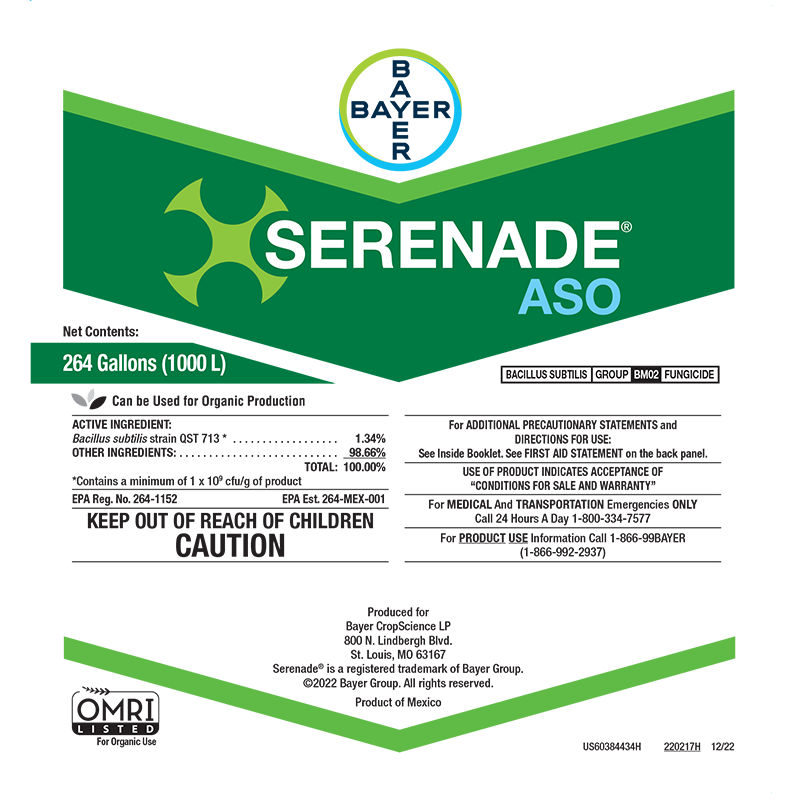Serenade ASO Biological Fungicide
FungicideSerenade® ASO biological fungicide is a powerful tool designed to protect against the effects of soil and foliar bacterial and fungal diseases. Applied at planting or through chemigation, Serenade ASO quickly builds a disease-protection zone around the seed or transplant. Applied as a foliar spray, Serenade ASO protects crops against diseases; both applications result in higher yields.
Approved In
AK, AL, AR, AZ, CA, CO, CT, DC, DE, FL, GA, HI, IA, ID, IL, IN, KS, KY, LA, MA, MD, ME, MI, MN, MO, MS, MT, NC, ND, NE, NH, NJ, NM, NV, NY, OH, OK, OR, PA, RI, SC, SD, TN, TX, UT, VA, VT, WA, WI, WV, WY
Labels / Safety Data Sheets (MSDS)
SERENADE ASO MSDS - English
SERENADE ASO Label
SERENADE ASO MSDS - Spanish
SERENADE ASO MSDS - Spanish
SERENADE ASO MSDS - English
Reduced Application Rates Recommended for Select Field Crops for In-Furrow Applications
Effective Against
Our portfolio has products to fight a variety of weeds, pests and diseases.
Fusarium
Pythium
Rhizoctonia
Some strains of Phytopthora
Registered Crops
Our products are available for use on a variety of different crops.
checkCitrus
checkCucurbits
checkOnions
checkPome fruits
checkPotatoes
checkStrawberries
Additional Downloads
2018 Serenade Potato Technical Bulletin
Serenade ASO Product Bulletin 21
2018 Serenade ASO Technical Bulletin
Product Bulletin 2023
